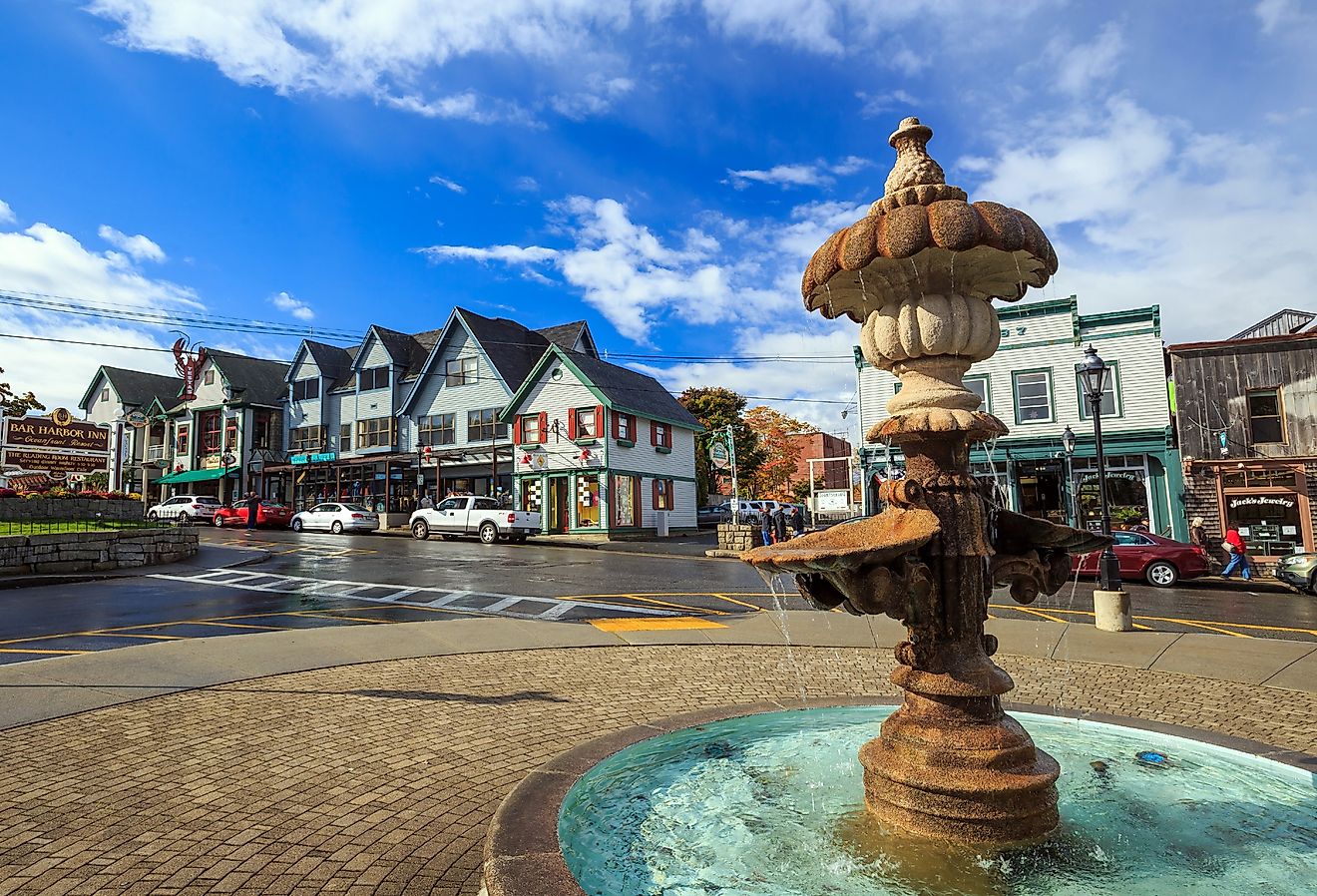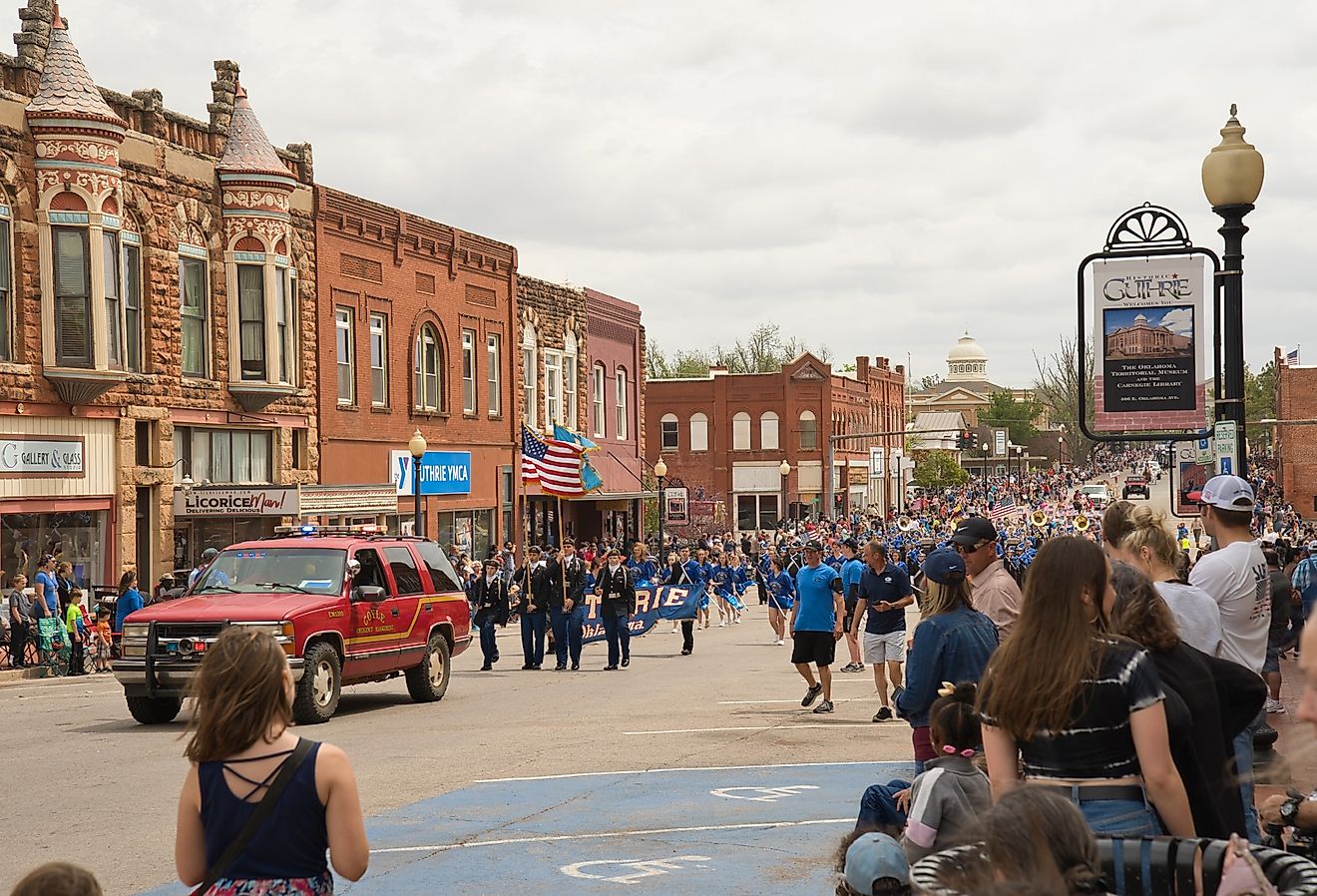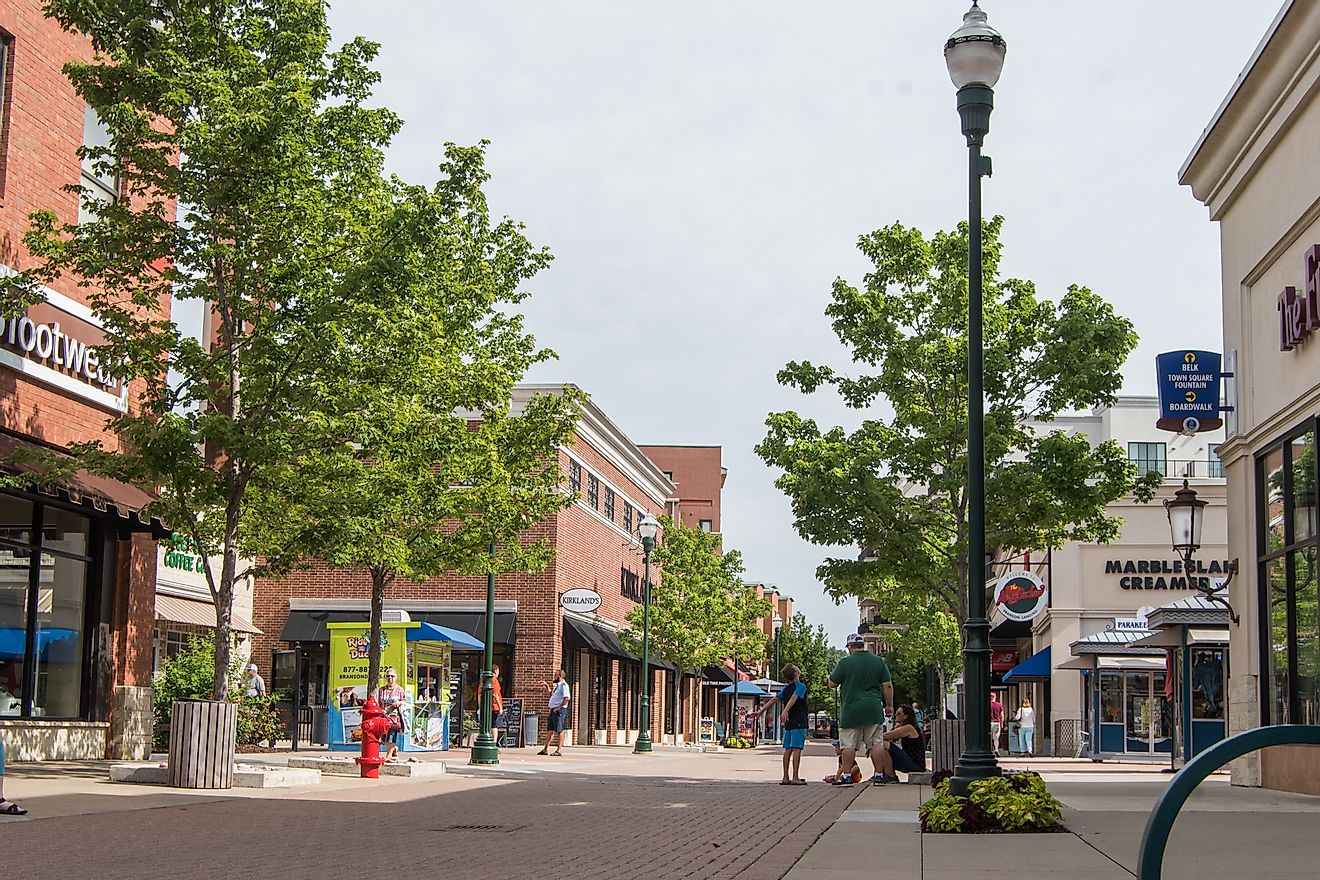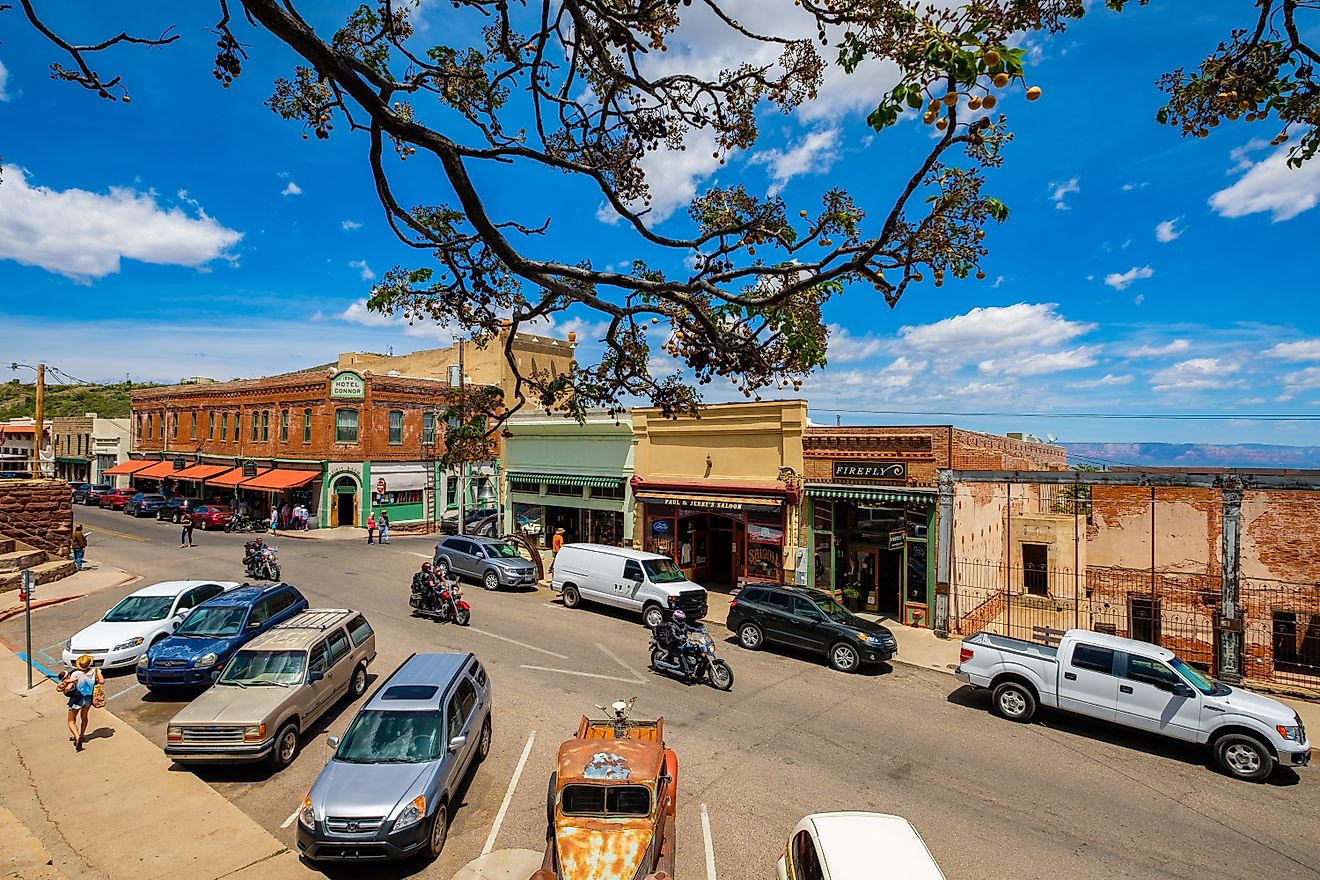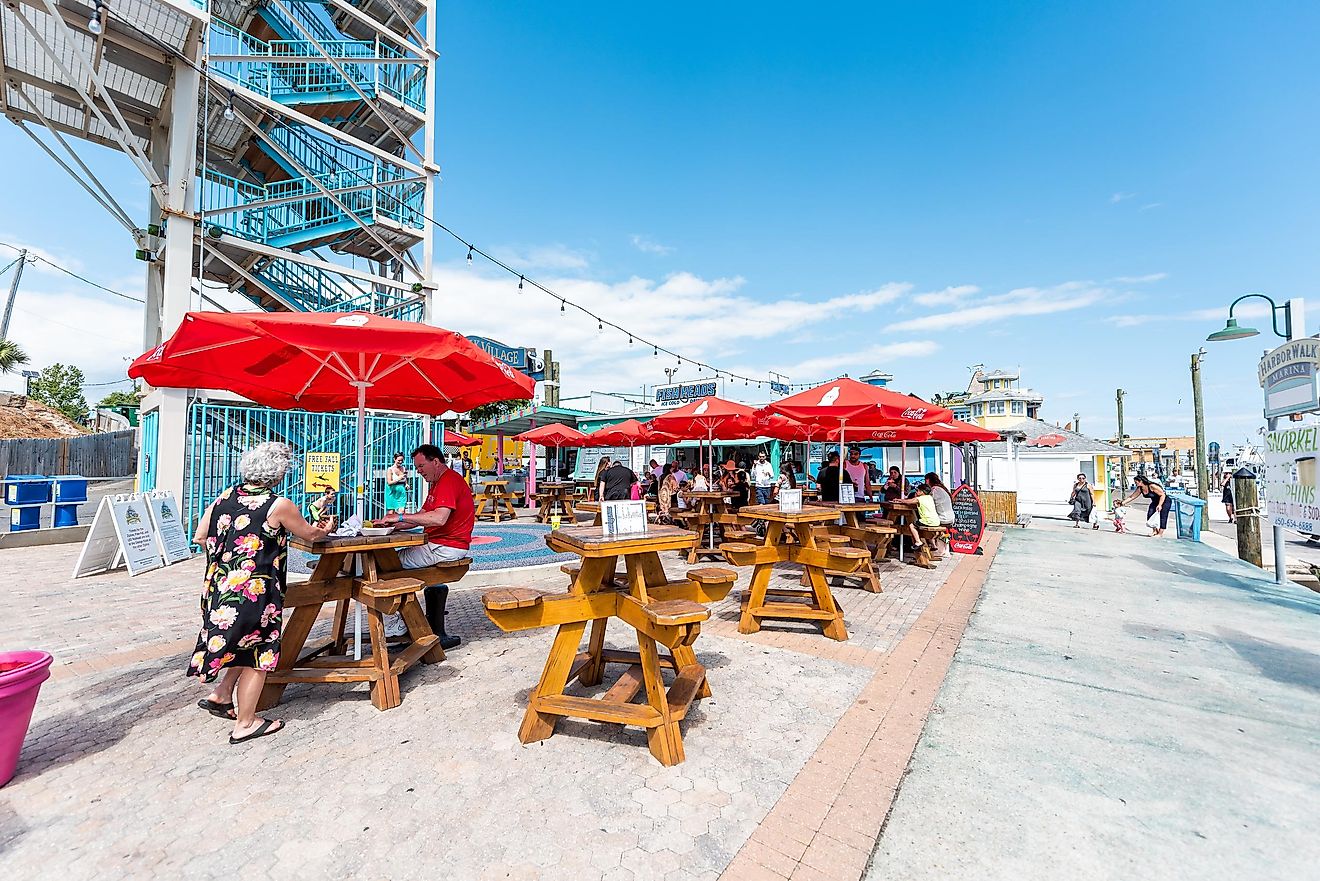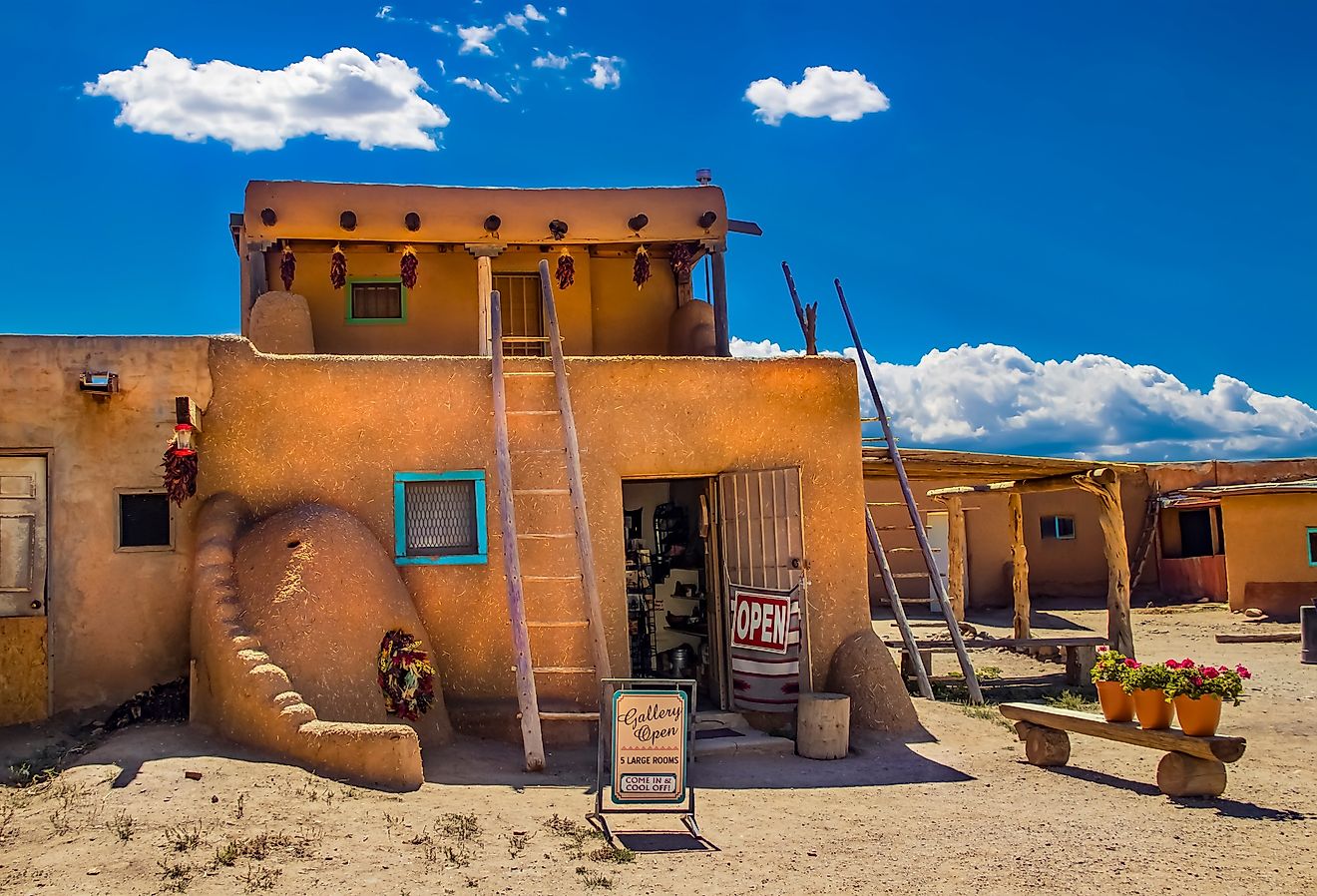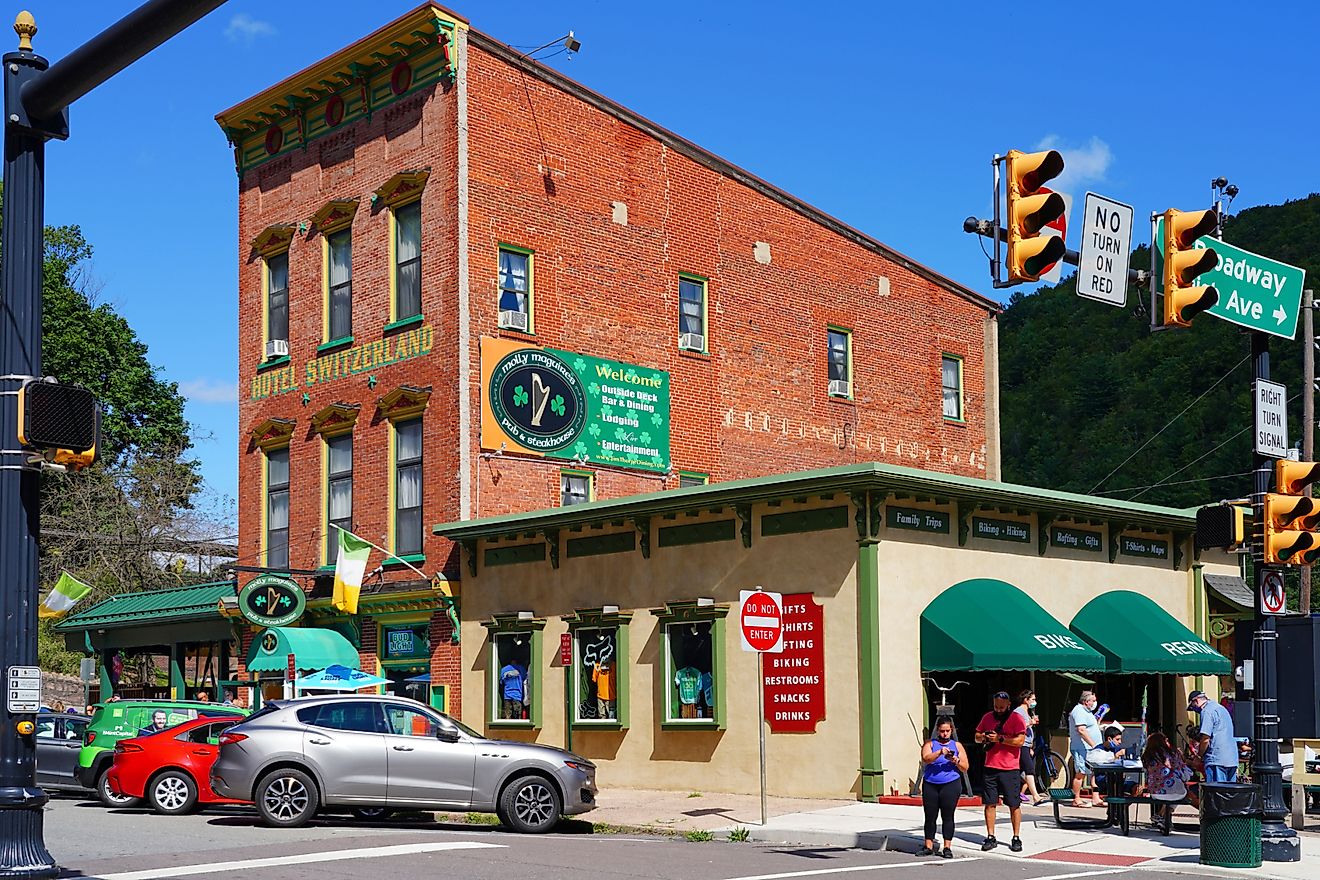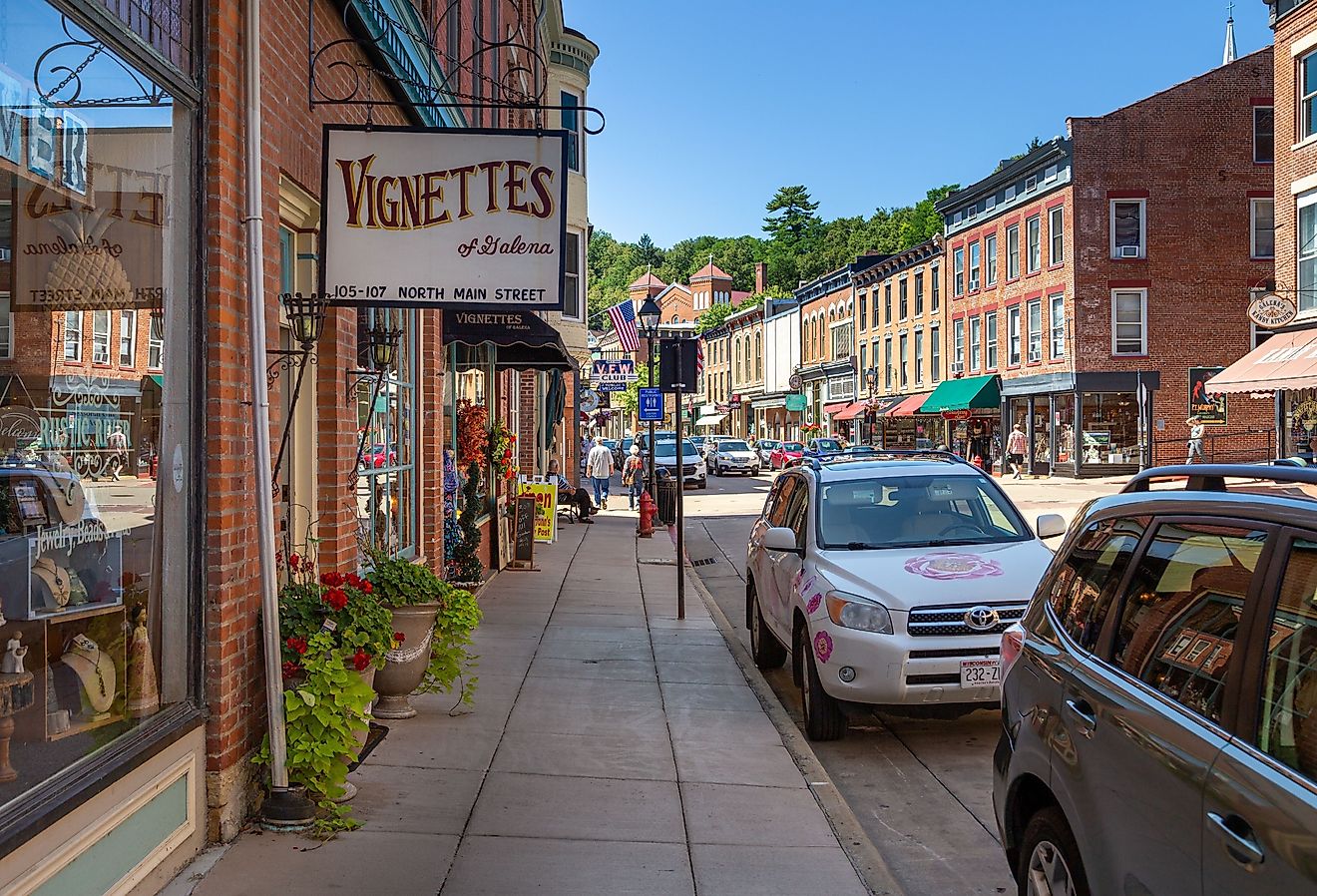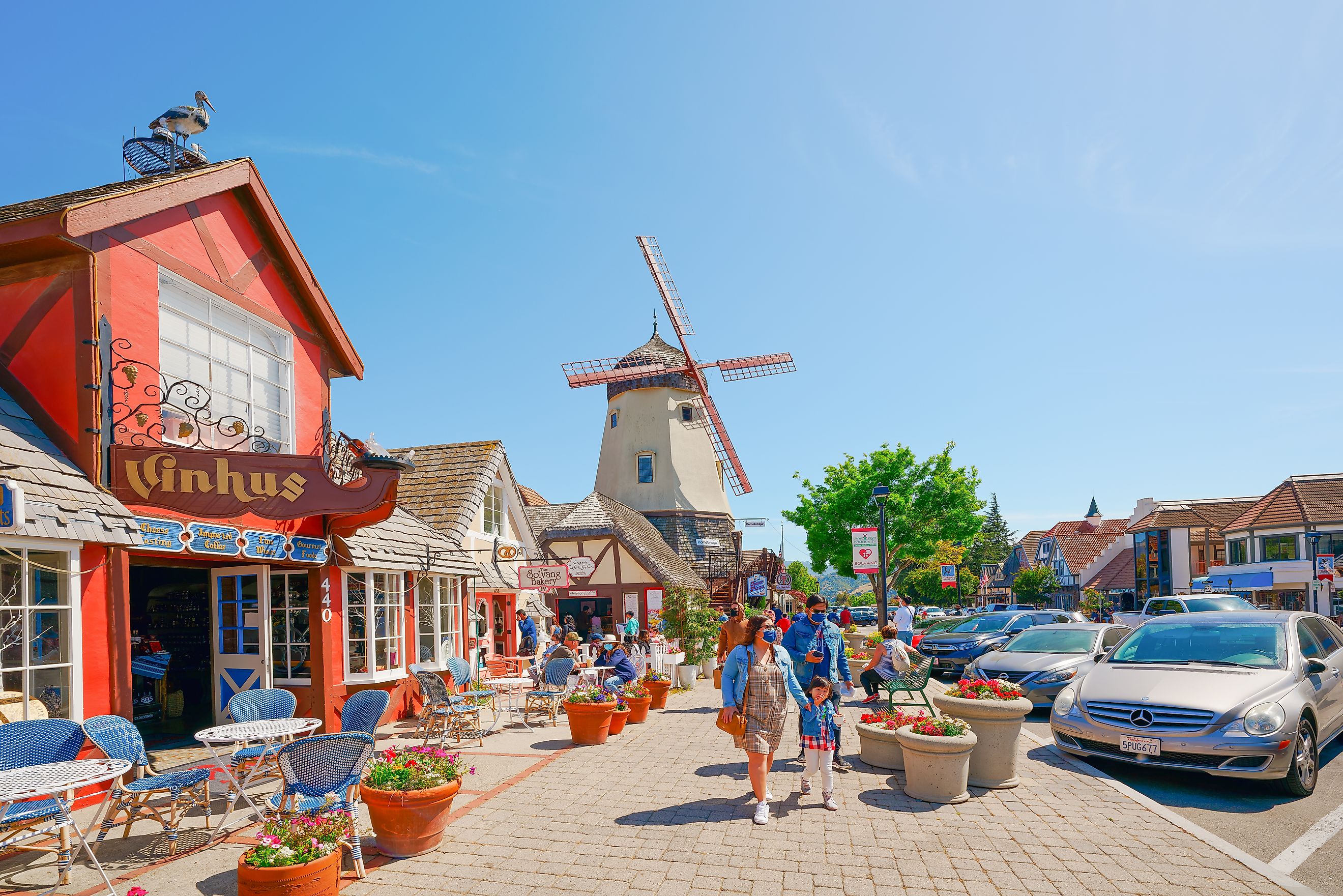
These Historic Towns in Southern California Are Worth Exploring
Along with beaches, palm trees, and pleasant weather, California's history is omnipresent. As the 31st state to join the union, the Golden State was shaped by people who traveled to seek economic, social, and educational opportunities for a life of quality and breathtaking beauty.
Towns in Southern California welcome visitors to explore history through personal interactions while enjoying the comforts of the modern world. With many historical landmarks in the state of California, there is plenty to see and do to explore history.
Put on your sunglasses and pack your bags for a historic holiday in Southern California.
Pioneertown
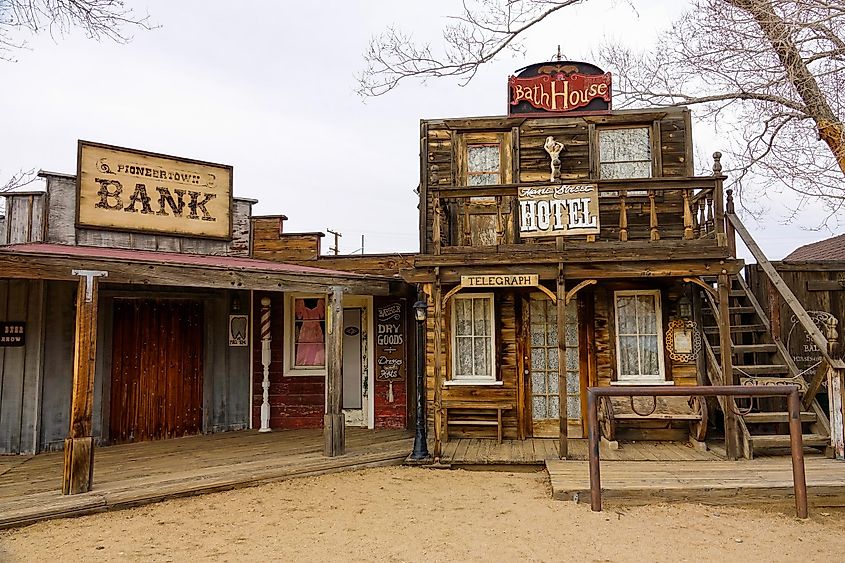
In 1946, seventeen investors, including the famous Dick Curtis and Roy Rogers, purchased 32,000 acres of land with a common goal; to create a place to work and play with friends. Pioneertown was built to resemble an 1800s Western town. Every building is a historic landmark that contributed to the town's notoriety.
A short drive from Palm Springs, Pioneertown continues to serve as a filming and vacation destination for the entertainment industry. Access to Downtown Pioneertown is free, welcoming visitors to shop, dine, and take in the ambiance of a Western movie set.
Visit Pioneertown for a long weekend, as businesses are closed on Tuesdays and Wednesdays. During the day, visit the Pioneertown Film Museum to learn about former actors and production crews who created movies and television programs.
Stay at the Pioneertown Motel, a place where travelers can rest after a day of exploring. The Pioneertown Motel maintains Western-style architecture with wooden beamed cabins which were initially used in the background of movies. For an intimate experience, book the Red Room Cabin, located in the heart of Mane Street.
Stop by the Pioneertown Post Office, America's most photographed post office. The historic post office is listed on the Historic Marker Database and is still an active establishment. Inside, stamp collectors will rejoice to see first-day covers of stamped envelopes from the Post Office's opening in 1950.
When the pangs of hunger hit, visit The Red Dog Saloon in Pioneertown's Historic District. The Red Dog Saloon was built in 1946 to be used as a functioning saloon for actors and production crews. The building's exterior and interior have been featured in many Western movies from the 1940s and 1950s, including Riders in the Sky, The Cisco Kid, and The Gene Autry Show. The building was restored in 2020 and features the original bar counter and bar top. The Red Dog Saloon welcomes visitors to dine on Tex-Mex cuisine and imbibe specialty cocktails among the echo of 1950s Western movie stars.
The town's quiet surroundings are perfect for bird-watching. For a more active spectacle, actors in authentic historical costumes reenact Western gun fights on Mane Street. The reenactments can be viewed in the Fall, Winter, and Spring on Saturday afternoons.
For nighttime entertainment, visit the Pioneertown Comedy Chuckwagon for a drive-in movie. The movie is projected onto a massive movie screen to ensure a good view. Although speakers are loud enough to hear, audio is available on FM Radio, allowing patrons to enjoy the movie completely from the vehicle.
While the demand for Western filming locations is not as popular as it once was, the town continues to be a functioning production set where movies, independent films, music videos, and commercials are filmed. Pioneertown is an immersive experience that welcomes visitors to dive into the Old West to a time when movies about cowboys were popular.
Monrovia
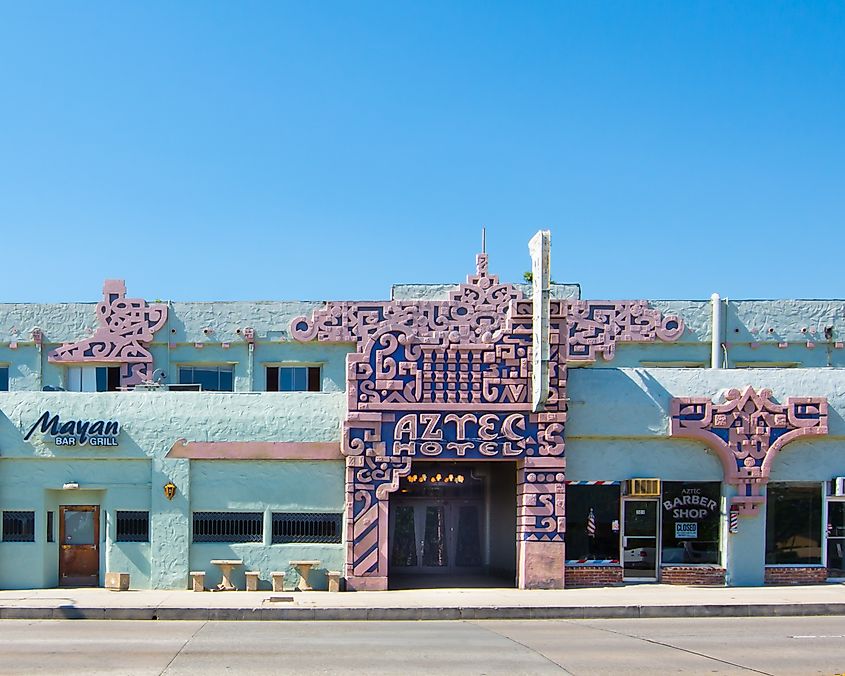
At the foothills of the San Gabriel Mountains, the city of Monrovia is a community of 37,000 and is one of the oldest towns in the San Gabriel Valley. In 1887, Monrovia was the fourth city incorporated in Los Angeles County, following Los Angeles, Santa Monica, and Pasadena.
With deep historical roots, Monrovia is home to several registered historic landmarks. Take a two-hour guided tour through downtown to visit over 100 historical landmarks showcasing architectural styles from the early 19th century. Architectural details include the steeply pitched roofs of Victorian Architecture and wide porches of the Craftsman Style. Tours begin on the corner of Palm and Myrtle Avenues and are offered on the first Saturday of every month.
For additional history, visit the Monrovia Historical Museum. Inside the 1925 Spanish-style building, the museum features exhibits of life in the 1900s, Monrovia's contributions to World Wars I and II, and over 10,000 artifacts on display.
In 1990, a California black bear made Monrovia his home. The cheeky bear visited the city often to snatch a bite from a local trash can, dine on avocados, and lounge in neighborhood hot tubs. To commemorate Monrovia's favorite local, decorated concrete bears are scattered throughout the city. Visitors are encouraged to trek the city to find them all!
On Friday night, visit the street fair on Myrtle Avenue. Vendors range from jewelry to jambalaya, enticing visitors to lighten their wallets. The first Friday of each month is kid's night at the fair, with a petting zoo and pony rides.
Throughout the year, Monrovia hosts themed events. The Old Town Fall Festival in October, the Holiday Home Decorating Contest and Parade in December, and the Old Town Wine Walk in April are fun for all ages. Additionally, the city hosts summer movies and concerts in the park.
The city of Monrovia welcomes visitors to enjoy their visit with architectural and historical walking tours, seasonal fairs, and a bear hunt amidst the warmth of Southern California.
Julian
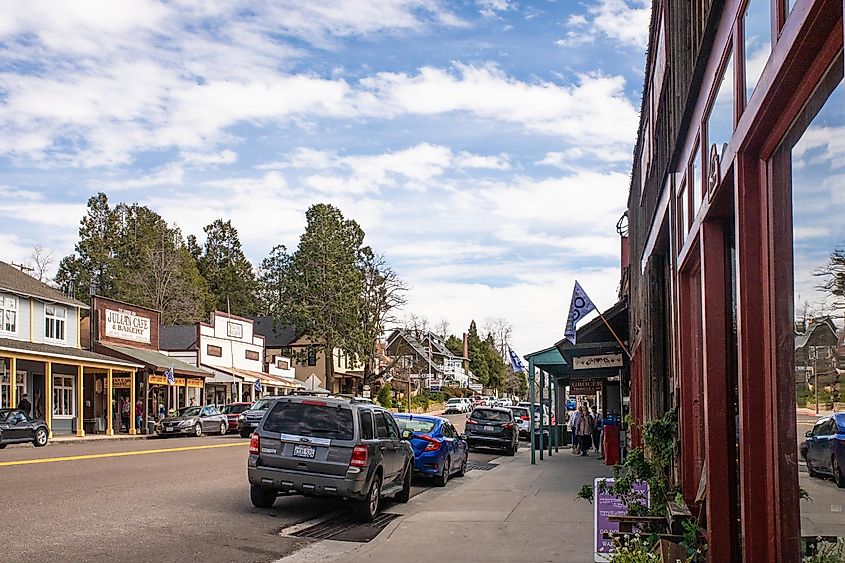
Julian is a historic gold mining town east of San Diego. In 1869, former slave A.E. Coleman found gold in the streambed of Coleman Creek. Soon after, the Coleman Mining District was established, leading the town of Julian into San Diego's gold rush.
In 1907, the apples of Julian was awarded the Bronze Wilder Medal at the Tricentennial Exposition in Jamestown, Virginia. Since then, the town has creatively expanded apple recipes. Every fall, Julian welcomes visitors during apple season for delectable pies, ciders, and caramel apples.
After a long day of exploration, retire to the quiet of the Julian Gold Rush Hotel, a historic Bed & Breakfast where the decorated rooms are furnished with American antiques of the Victorian period. The Julian Gold Rush Hotel is the oldest continuously operating hotel in Southern California, having been opened in the 1800s by former slave Albert Robinson and his wife, Margaret.
For a day in town, stop by Julian Pioneer Park, a museum dedicated to the history of the town. Once the town's blacksmith shop, the historical landmark displays local artifacts featuring Native American history. The museum is managed by volunteers, open from Thursday to Sunday.
Expand knowledge of the town and surrounding area with a private tour with David Lewis, the town's historical pro. Choose between a general town history tour or a historical cemetery tour. Lewis also offers personalized tours catered to visitor's interests.
With beginnings as a gold mining town, visit The Eagle Mining Co. on Miners Road for a tour of the mines. Informational tours include guided adventures through Old Hardrock Tunnels and conclude with a mining demonstration.
Julian greets visitors year-round with hospitality, delectable apples, and personal history-focused tours. Only sixty miles from San Diego, it is easy to make Julian a day trip or a quiet weekend getaway.
Wrightwood
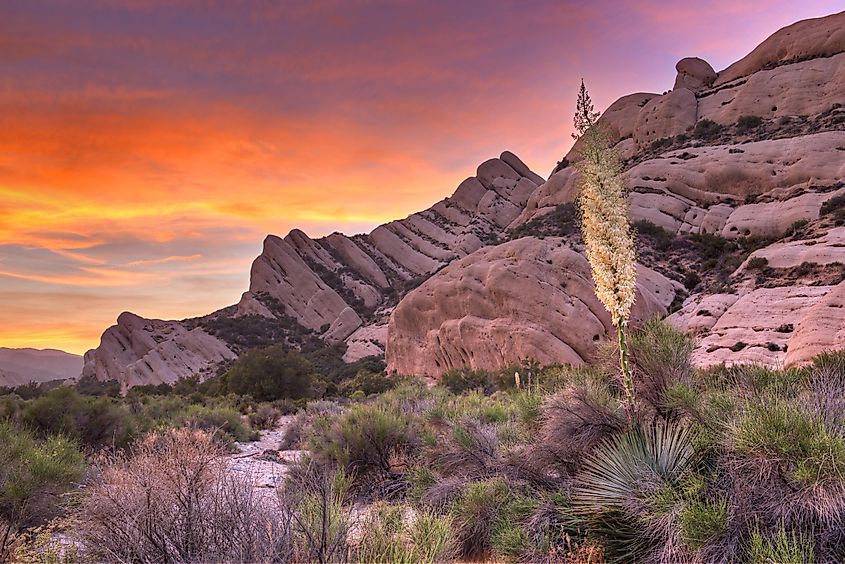
Wrightwood is an outdoor enthusiast's playground in the San Gabriel Mountains. Home to independently owned small businesses, the town of Wrightwood welcomes visitors to play outdoors.
The land was inhabited by the Serrano Tribe for hundreds of years before the arrival of the Spanish missionaries in 1819. Years later, in 1851, Mormon brothers Nathan and Truman Swartout settled in the valley to ranch cattle. By 1920, the land was sold to Sumner Wright who would later establish the town of Wrightwood.
Historical landmarks are a reminder of the people who once resided in the area before the town of Wrightwood was established. Hike the carved path of the Big Horn Mine Trail to see the abandoned one-room wood cabin of Charles Vincent, who discovered and built the Big Horn Mine in 1898. Further along the path, hikers can walk around the abandoned mine structure for a view of the valley.
Visit the Acorn Lodge, a rugged stone structure built by William Marion Bristol in 1929. Over time, Bristol created art using what he found in surrounding nature. The exterior of the building features his creations, which utilize large stone and wood to create steps and archways. Most of his work is now on display at the Wrightwood Museum.
To learn about the history of the town, visit the Wrightwood Museum. The museum showcases a collection of donated artifacts and memorabilia which highlights the town's cultural history. In addition to history, the museum hosts themed events throughout the year, including the Haunted Museum in October for children, holiday parties in December, and quilt exhibitions.
As early as 1920, the area became a vacation spot and winter wonderland destination. For snow bunnies, the Mountain High Ski Resort challenges skiers and snowboarders with trails along the hills of the Angeles National Forest. Additional fun can be found with a visit to Yeti's Snow Play. Slide down tubing lanes, sled down hills, and play in designated areas in the snow. End the day with a meeting with the Yeti before dining at the Grand View Bistro.
When the ground is not snowy, venture along one of many hiking trails. For the adventurous hiker, hike the Pacific Crest Trail. The trail is a National Scenic Trail that passes through Wrightwood on its way from Mexico to Canada.
What began as a cattle range, Wrightwood morphed into a winter playground. With mountain views, Wrightwood is a historic small town with lots of room for outdoor exploration.
Coronado
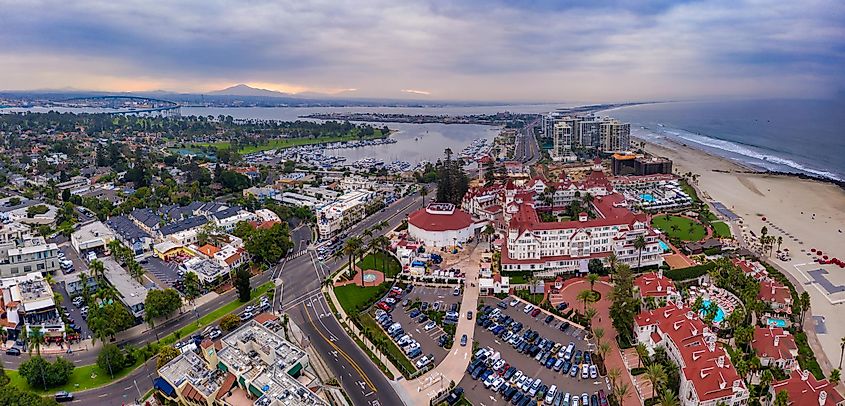
Aerial panorama of Hotel del Coronado and other buildings in Coronado, California.
Across the bay, just 5 minutes from San Diego, the small town of Coronado welcomes visitors to put their toes in the sand year around.
In the 1920s, Coronado became an aviation playground. Pilots flocked to the town to experiment with various flight patterns. Visit the town's museum to learn about their experiments. The museum also features rotating exhibitions with a focus on Coronado's history.
In addition to thought-provoking exhibitions, the museum encourages patrons to participate in The Open Collections Workshop. Discover behind-the-scenes operations of a museum and view historical artifacts from the Coronado Historical Association’s collection.
For historic architecture and a national landmark, visit the 135-year-old Hotel del Coronado. The Victorian-styled hotel was completed in 1888 and provides a glimpse into the region’s glamorous seaside past. Walk the same grounds as Marylin Monroe, President Jimmy Carter, and President Franklin D. Roosevelt. Marvel at the prominent stained-glass window, The Lady at the Window. The window is original to the hotel and is visible from outside as well as from inside the lobby.
Visit the Oxford, a three-story wood frame building built in the Greek Revival style, which was the first hotel in Coronado. The tiny hotel opened on July 28, 1887, but in 1911, the building was moved to Ynez Place, near Hotel del Coronado. The Oxford then served as a dormitory for the employees of the neighboring glamorous hotel.
For a variation from historical buildings, visit The Naked Warrior, a bronze statue by the artist John Seward Johnson II. The statue is listed on the Historic Marker Database and was erected in 2016 by The National Navy UDT-SEAL Museum and The Navy SEAL Foundation. The World War II statue commemorates combat swimmers.
Peruse Coronado's main street for a bit of shopping and dining. The street is lined with trendy boutiques, gourmet restaurants, and art galleries. During seasonal events, Main Street is transformed. Popular with the locals, the annual Motor Cars on Main Street packs the street with antique cars for exhibition.
Of course, while visiting, the town's clearwater beaches are perfect for swimming and surfing. At Sprawling Tideland's Park, play at recreational fields, explore a children's play area, utilize the skate park, enjoy a snack at picnic benches, and build castles on a small sandy beach.
History is preserved within the captivating beach town of Coronado.
Solvang
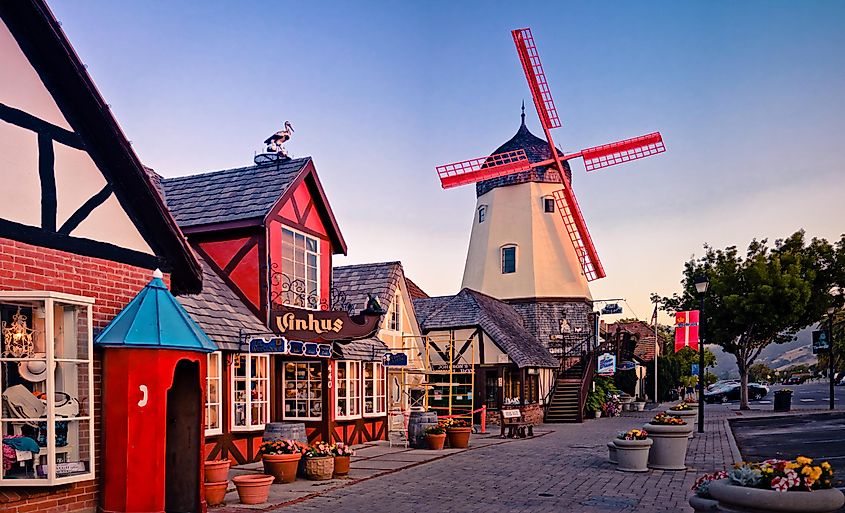
Take a European getaway in Solvang, California! Solvang is a slice of Danish culture in the Santa Ynez Valley, where California wine cellars blend with European bakeries and shops.
Although visitors arrive looking for European whimsy and sweet treats, the historical landmarks of Solvang lure visitors into learning about the town's origin story.
To explore Solvang's history, begin with a visit to the Santa Inés Mission. Established in the 1800s, the Santa Inés Mission is an operational church welcoming visitors to explore the history of the building and surrounding grounds on self-guided tours.
Another notable church is the historic Bethania Evangelical Lutheran Church. The church, which opened in 1928, was the first in the town to incorporate Danish-style architecture. In the years to follow, more buildings were built, including the classic timber framing, which led to the town of Solvang becoming a visual tribute to Denmark.
Wander through the Elverhøj Museum of History & Art to view exhibits celebrating the Danish-American pioneer spirit. In 1950, artists Viggo Brant-Erichsen and his wife, Martha Mott, reconstructed their home to reflect an 18th-century farmhouse. In the 1980s, the couple donated their home to the city to be used as a museum.
Visitors to the museum will see Scandinavian architecture reflected throughout the building, including wrought iron and a carved wooden front door. Inside, the Everhøj Museum of History & Art displays old photographs and traditional European homemade crafts such as paper cutting, lace making, and clog making.
To further assimilate the town into Danish culture, the Round Tower of Solvang was built in 1990. It is a replica of the original tower that resides in Copenhagen. The round tower is one-third the size of the original, and instead of a spiral ramp or observatory, the Round Tower of Solvang is home to the Tower Pizza Restaurant.
When the weather is warm, take a historical tour through Solvang in a horse-drawn trolley operated by the Solvang Trolley and Carriage Company. The tour includes a 25-minute narrated historical account of Solvang's architecture and attractions while riding in a replica of an 1800s Danish streetcar pulled by horses. Tours are available every day of the week except Tuesdays and are first come, first serve.
In addition to visiting historical sites, take a promenade through The Hans Christian Andersen Museum, operated by the Ugly Duckling Foundation, to learn more about the Danish fairy tale author Hans Christian Andersen. Afterward, marvel at the talent of local artists at the Wilding Museum of Art and Nature.
Stroll Copenhagen Drive tasting Aebleskiver and other Danish pastries at Birkholm's Bakery & Cafe, Danish Mill Bakery, and Solvang Bakery are a few among a long list of bakeries. Drop in for buttery cookies, fluffy cream puffs, and waffles. With so many options, it will be hard to choose where to start!
The one-of-a-kind town of Solvang, California, is a visual marvel with traditional Danish architecture, vintage shops, and authentic Danish pastries.
Joshua Tree
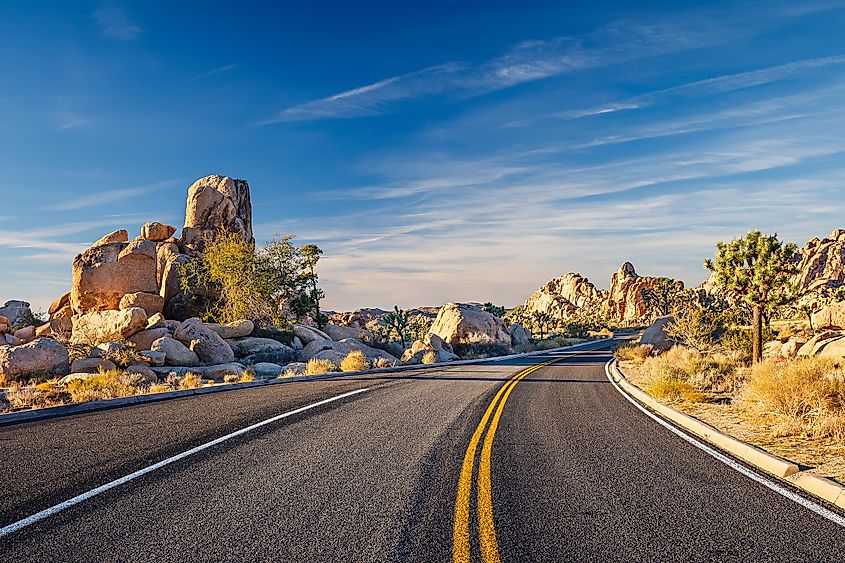
Joshua Tree National Park in the Mojave Desert, California.
In the Mojave Desert is Joshua Tree, a tiny town within proximity to the National Park of the same name. The town was named by Mormon pioneers in the mid-1800s. The peculiarly shaped native trees of the area reminded them of the Biblical story of Joshua, who raised his hands to the sky to pray.
The area was declared a wasteland for many years until 1936 when President Franklin Delano Roosevelt signed a proclamation that designated 794,000 acres as a national monument. Fifty-eight years later, in 1994, it became a national park named after the town.
The famous national park draws visitors to explore rock formations and see the notorious Joshua Trees for themselves. The trees have been growing in the Mojave Desert for thousands of years and are a historic attraction.
In addition to natural treasures, the Mojave Desert is home to an archaeological site listed on the National Register of Historic Places. Hike along a trail in the shadow of Ryan Mountain to Ryan Ranch, where adobe remains of an estate from the 1800s reside.
Barker Dam, also known as Big Horn Dam, was constructed in 1900 by cattlemen and since has become a watering hole for local wildlife. Visitors can reach the dam along a short loop trail from the Barker Dam parking lot. For in-depth historical information, visitors can take a guided nature tour led by a park ranger.
Also listed on the National Register of Historic Places is Cow Camp. The camp was associated with cattle rustling in the 1880s and was later utilized as a cattle ranch. Hikers can visit the remains of the ranch, which consists of a stone chimney, two small dams, and a well.
After hiking through history, visit the Coyote Center to purchase a souvenir. The shop has books, apparel, jewelry, maps, and other items to commemorate the town.
When hunger strikes, dine at Country Kitchen, a restaurant that boasts of serving "home cooking for your soul". For a live show and a fun atmosphere, visit Spaghetti Western. The restaurant is owned by native Italians Jasmine & Lorenzo, who source local food to produce authentic meals with live music on the weekends.
Visit Joshua Tree for the famous historical national park and stay for the town's ambiance.
Monterey
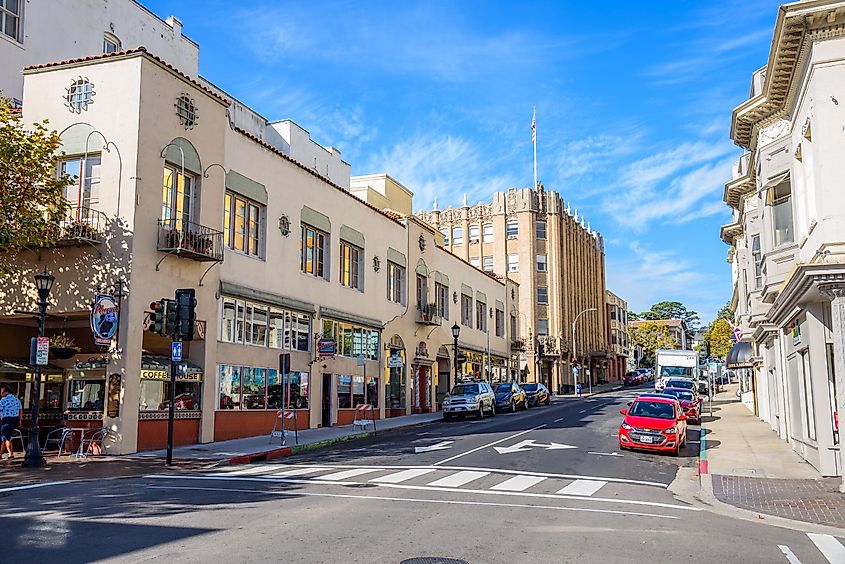
Along the coast of California is the city of Monterey. Established in 1770 by Spanish missionaries, the city has since grown into a popular tourist destination. Visitors are drawn to the city for the beach, mild Mediterranean climate, and historical landmarks.
Visit the Royal Presidio Chapel, the only 18th-century Spanish architecture left in the city. Completed in 1794, the chapel is the oldest stone building in California. In 1961, the chapel became a National Historic Landmark. A few years later, in 1967, the chapel received official cathedral status, changing its name to San Carlos Cathedral. As an active church, San Carlos Cathedral welcomes visitors to explore original architectural details both inside and outside.
For political history, visit Colton Hall. The building was completed in 1849 for use as a government center and was Monterey's first school. Within the same year, delegates gathered at Colton Hall for a Constitutional Convention. The delegates decided California's size, shape, the location of the state capital, and whether it would be a free or slave state. Colton Hall is open every day of the year, 10 AM to 4 PM, for visitors to walk the historic halls.
Monterey's Old Town Historic District is an architectural aficionado's dream and is best explored on a walking tour. The Monterey Walking Path of History is a historic two-mile path visiting 55 historic buildings and sites. Yellow-tiled markers along the sidewalk guide visitors along the path.
Stop by historic Cannery Row, which, until 1918, was the center of the sardine packing industry. The decline of the fish canning industry after World War II left the area in ruins. In 1976, Cannery Row was restored and became a popular visitor destination. The converted factory spaces now house souvenir shops, seafood restaurants, and bars.
A visit to Cannery Row would not be complete without a visit to the Monterey Bay Aquarium. Less than a mile walk, the aquarium welcomes guests to view marine animals, native plants, and interactive exhibitions.
Monterey is a historical city blending culture, architecture, and social fun.
Southern California History
Southern California is a cornucopia of historical landmarks in addition to options for physical, intellectual, and visual adventure.
Historical fanatics can visit a multitude of museums or participate in guided tours to explore artifacts, architecture, and local artists. The history of Southern California is meticulously maintained by volunteers and organizations whose purpose is to educate and entertain.
Additionally, visitors can spend a day on the beach, visit a vineyard or tasting room, camp in the woods, or hike through a national park. Local festivals welcome visitors to enjoy music, art, wine, and food, while local spas invite patrons to unwind after a day of exploration. Southern California captivates visitors year-round to create eternal memories surrounded by history.
